3 Best Tare Sauce Recipes: Japanese Glaze Your Meat & Fish
If you like to use dipping sauces, and you love Japanese cuisine, then tare sauce is the way to go!
Tare sauce is a Japanese dipping sauce, which means you can flavor any bite of food with it.
However, it can also be used for grilling foods, like yakitori and yakiniku, where it can make a good substitute for teriyaki sauce.
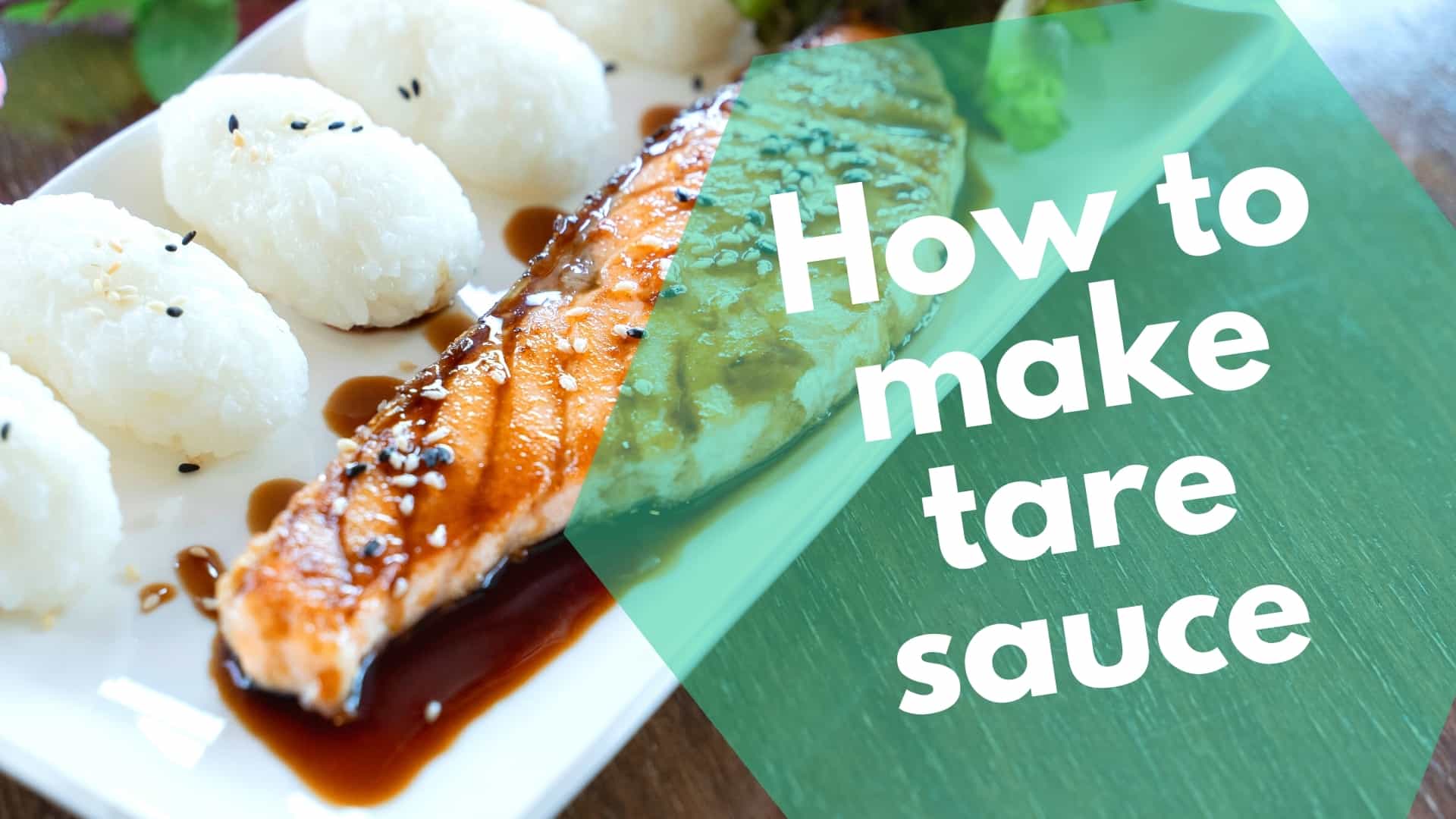
It can also be combined with broth and added to ramen and various soups, or it can be used to braise meat.
Every chef may make tare differently, but it typically has a soy sauce base with dashi or vinegar added for flavor. Soy sauce, mirin, and oyster sauce also fall under the tare sauce umbrella.
This article will review tare sauce offering recipes, uses, the best brands, and just about anything else you’d ever want to know about this wonderful condiment!
If you like to use dipping sauces, and you love Japanese cuisine, then tare sauce is the way to go!
Tare sauce is a Japanese dipping sauce, which means you can flavor any bite of food with it.
However, it can also be used for grilling foods, like yakitori and yakiniku, where it can make a good substitute for teriyaki sauce.
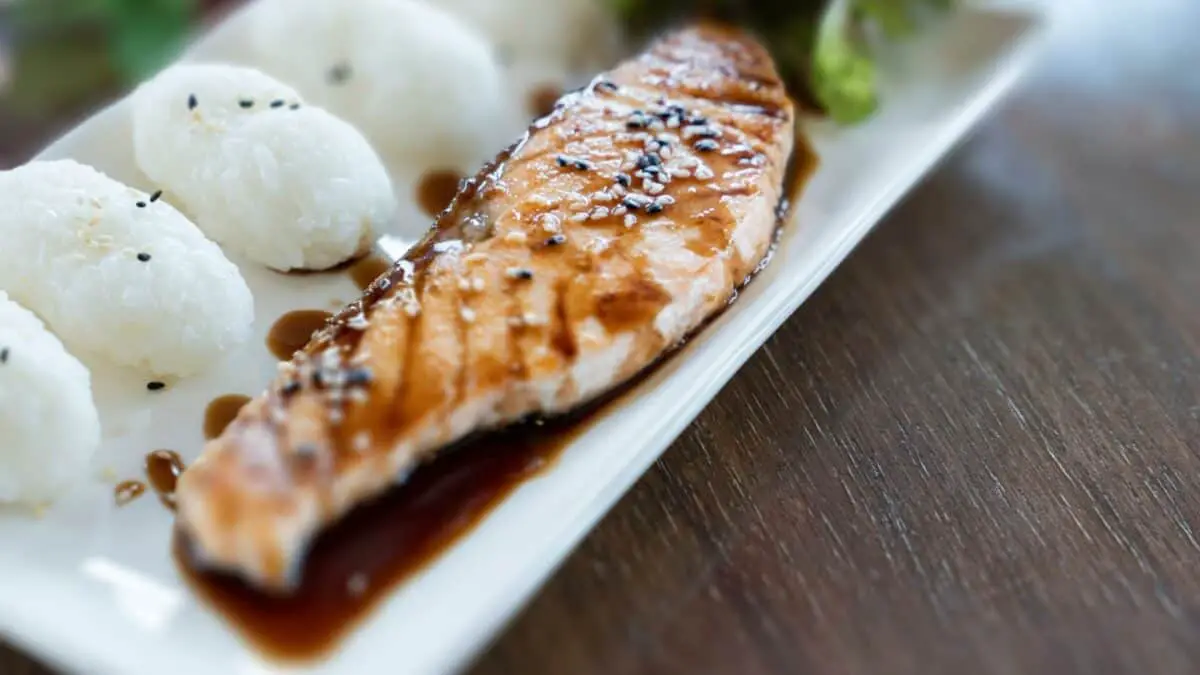

Check out our new cookbook
Bitemybun's family recipes with complete meal planner and recipe guide.
Try it out for free with Kindle Unlimited:
Read for freeIn this post we'll cover:
Best 3 tare sauce recipes
Dashi Tare Sauce
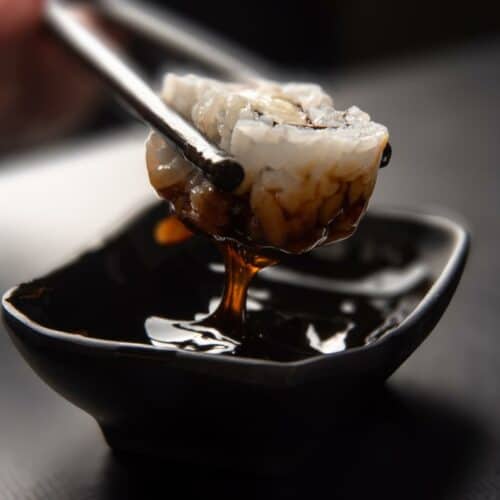
Dashi tare is a tare sauce made with dashi. Tare sauce is a Japanese dipping sauce and not all are made with dashi, so the distinction is made when it is. Dashi is a broth made from katsuobushi and kombu that gives umami to the sauce.
Tare is a type of sauce made from soy sauce, mirin, and sugar. It’s often used as a marinade or dipping sauce for meats and vegetables.
Tare is made by simmering soy sauce, mirin, and sugar until the sugar has dissolved. The sauce will be a dark brown color when it’s done.
It’s often used in yakitori restaurants to give the chicken skewers a nice glaze.
Chuka tare sauce
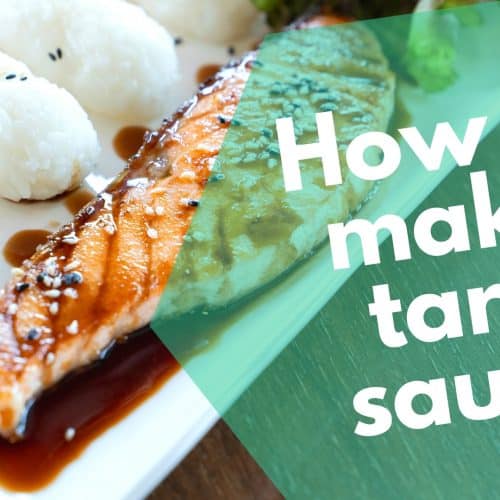
Tare is a delicious dipping or glazing sauce that’s very mild in flavor. In other instances, different spices can be added to give the sauce a kick.
This is called Chuka tare or “Chinese” tare. This is the perfect recipe for it.
Ramen tare sauce

Although tare is diverse, most of its recipes are pretty similar.
As the above recipe is ideal for soup, you can play around with other recipes to make a thicker consistency for dipping or basting or to add a certain flavor.
But in general, a broth base is used, mirin, soy sauce, and sake are added, and a variety of spices are used to produce an umami taste.
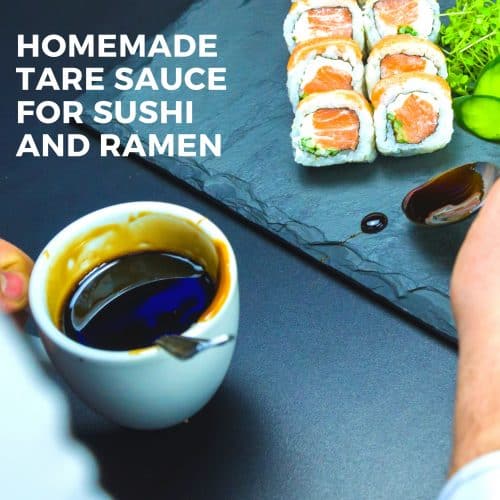
3 Best Tare Sauce Recipes
Ingredients
- ½ cup chicken or vegetable broth low sodium or sodium free is best
- ¼ cup mirin
- ½ cup soy sauce
- 2 tbsp sake
- 1 tsp brown sugar
- 1 tsp rice wine vinegar
- 1 inch piece ginger peeled and smashed
- 1 clove garlic peeled and smashed
- 1 scallion chopped
Instructions
- Combine ingredients in a saucepan and bring to a simmer.
- Simmer tare until it reduces to ½ cup, about 25 minutes.
- Strain solids and let the sauce cool. Store in an airtight container in the refrigerator for up to 2 weeks.
Use tare sauce in your cooking
Tare sauce is the perfect way to flavor your meals. It lends a salty, umami taste that many diners find irresistible.
Which tare sauce do you like best?
Check out our new cookbook
Bitemybun's family recipes with complete meal planner and recipe guide.
Try it out for free with Kindle Unlimited:
Read for freeJoost Nusselder, the founder of Bite My Bun is a content marketer, dad and loves trying out new food with Japanese food at the heart of his passion, and together with his team he's been creating in-depth blog articles since 2016 to help loyal readers with recipes and cooking tips.
